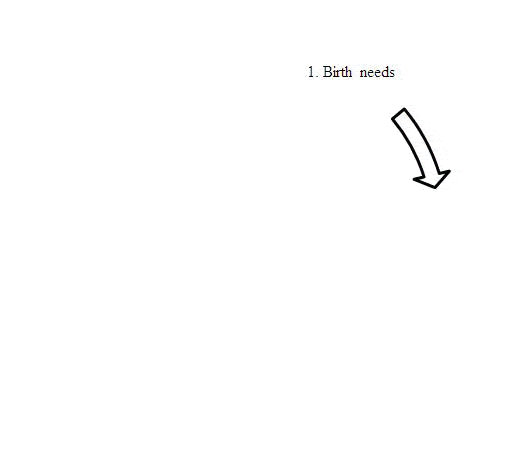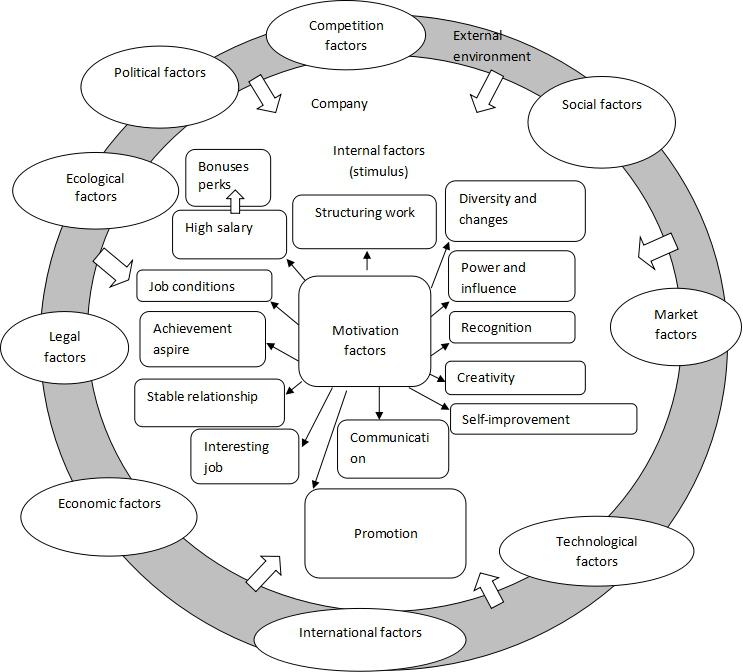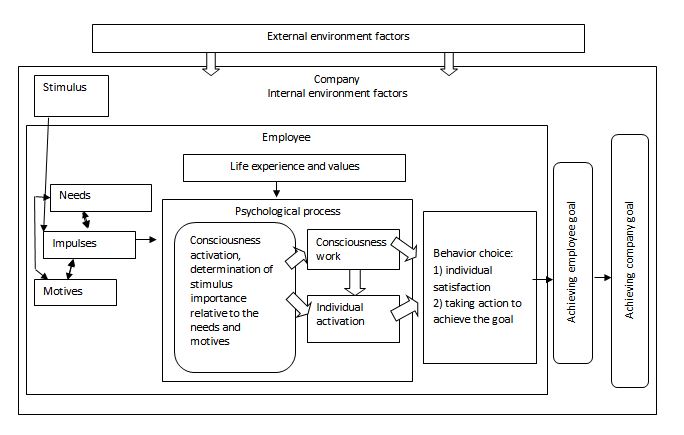Economics of Enterprise
Resources are the most important part of the stable economic company operation and development. And if the result of such resources using : natural, financial, material and others depends solely on how and where they will be specifically applied in the production process, the result of human resources using depends on many factors. Human or labor resources in the resources hierarchy are at the first step, because of their direct influence and interaction with other resources, goods and services can be created. Human resources are the driving force for transforming resources into an economic good.
It is possible to influence on labor resources only through the formation and improvement of the personnel motivation system. To motivate the staff use both tangible and intangible incentives.
Many companies do not pay enough attention to the motivation system. So workers do not show initiative and creativity in their activities, to fully take responsibility for the decisions were made and implemented in practice.
With the development of the economy, the transformation of relations between the seller-consumer, the employer-employee, employee requirements for their work are being changed. Therefore improving of staff motivation is highly relevant, because it can activate workforce to perform company tasks.
The purpose of this research is to study the scientific-theoretical and methodological aspects of motivation, the development of practical recommendations for improving company motivational system.
Main tasks of the research:
Staff motivation has attracted scientists for a long time and is actively considered in their writings. Analyzing literary sources, one can say there are many approaches to the interpretation of motivation and technologies to increase staff motivation.
Various approaches to the term motivation
show differences and also help to identify common features characterizing motivation as an incentive to activity.
Thus, motivation is an internal complex process of person specific behavior model decision, which is influenced by external (stimulus) and internal (motives) factors, human needs (fig. 1).

Figure 1 – Scheme of motivation as a process
Motivation process can be represented in the form of six successive stages (fig. 2). This stages division is conditional, because there is no such clear stages separation in real life.

Figure 2 – Motivational process cycle [1]
(animation: 6 frames, 10 cycles of repeating, 71 kilobytes)
At the first stage, the employee begins to feel the need. Needs can be divided into three types: physiological (need for food, house, etc.), psychological (need for a stable and balanced working climate) and social (need for self-realization, self-improvement and self-expression). The second stage forces the employee to act. At the third stage, there is a fixation of what and how to do, what means must be used to meet the need. At the fourth stage, employee understands what to do to satisfy the need. At the fifth stage, employee, having done a certain job, gets what he can use to meet the need. At the sixth stage, the need is met. Depending on level need satisfaction employee could stop activity until new need or continue to search opportunities to meet the need. Thus, motivation process cycle can be repeated with the new need.
At the same time, the motivation system must be considered as a complex mechanism, which is influenced by many factors. At fig. 3 it is shown a generalized motivation system model of labor behavior. It is shaped by external and internal environment factors, which have direct and indirect influence on the labor behavior motivation:

Figure 3 – Employee motivation model (added by the authors [3])
The created motivational model establishes clear requirements for employees, which define their functional duties and responsibility forms, a guarantee system that allows an employee to receive an adequate level of remuneration for labor if he carries out his job description. However, this model does not allow to trace these factors influence on the motivation formation in the work process.
The mechanism of all factors influence on the employee motivation can be represented in the next scheme (fig. 4), which reflects motivation as a structured process consisting of the following stages: inducement-analysis-action.

Figure 4 – The mechanism of external and internal factors influence on the employee motivation formation (added by the authors [2])
This model is a structural-logical scheme of the motivational process and a theoretical basis that takes into account the interrelated influence of external and internal environment factors and the employee qualities on the motivation process.
The schemes presented above allow to form a general theoretical motivation model. In the model in fig. 3, more attention is paid to factors influencing externally on human behavior, i.e. completely independent of the employee. This motivation model is enlarged. In the second model (fig. 4), it is represented the mechanism of internal motivation formation, where an employee chooses a certain model of behavior, which is formed not only due to factors from the outside, but also taking into account internal qualities, experience, values of each employee. When motivation system is being built, it is necessary to rank factors of influence in order of value decreasing for an employee and choose such a combination that will achieve the company goals, reduce external factors, activate the internal factors, increase the employee motivation and loyalty.
This abstract reflects mainly the first and partly second section of Master's thesis, because at the moment of writing the abstract, the thesis has not been completed. Final completion is scheduled for May 2019.
In the third section Improving employee motivation
it is planned to develop recommendations for improving the employee motivation system in the company and calculate the economic effect of a set of proposed measures.
Nowadays, staff motivation becomes more popular in an unfavorable external environment and an ever-changing people needs. The main factor of labor productivity growth, increasing of production efficiency and, as a result, growth of enterprise profitability is one of the most important resources of any business – its staff and its effective management. The labor resources quality directly affects the company competitive capabilities and it is the most important basis for the competitive advantages formation in all production process stages. By investing in the employee motivation, the company activates their labor returns, increases productivity, reduces the cost of working time, strengthens its competitiveness.
The selected employee motivation system should be constantly improved and changed, because using of the same motivating factors over time can cause habituation effect and weaken the employee motivation. It should also be considered that motivating factors may have a different character, influence and change over time due to transformations of the external and internal company environment.